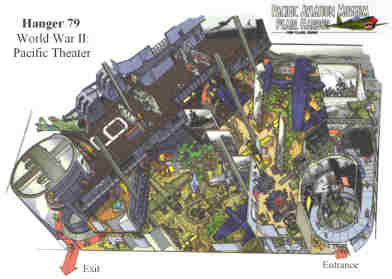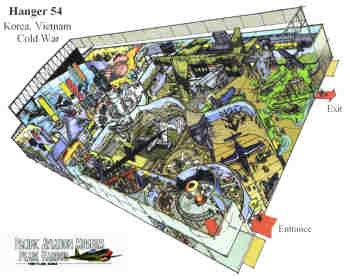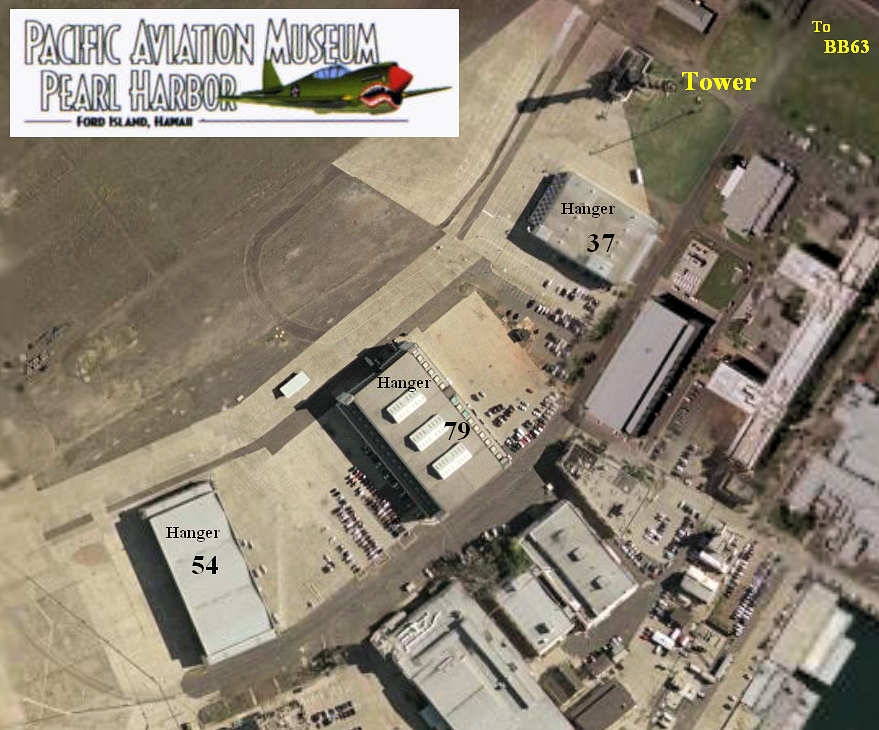Visitors to the museum will begin
their experience in the first phase of the museum and the nearest
hangar to the Control Tower, Hangar 37. Here in the large format
theater they will see film of the December 7th attack that details the
battle scene with original film and still photographs interposed.
Scenes of Hawaii awakening on December 7, 1941 will add to the
orientation. For example, sailors are seen tumbling from bunks on the
Oklahoma and racing to their battle stations. CINCPACFLT HQ, in another
scene, has officers receiving confusing messages from Washington. The
two Army radar technicians at Opana Point are shown practicing with
their new gear. Army sentries are guarding the closely lined P-40s at
Wheeler Field. Hawaiian music on the radios is gradually drowned out by
the sound of aircraft and the ensuing battle.
At the conclusion of the
introductory film, visitors will exit into the exhibit area where they
will experience the air attack on Hawaii through dioramas with aircraft
and artifacts from WWII in the Pacific.
|
As visitors complete their tour of
Hangar 37, they will exit on the ramp and relive the aftermath of the
Japanese attack with a debris field, smoking PBYs an other seaplanes.
Jitneys outfitted as Red Cross vehicles will be employed to next move
the visitors on their museum tour toward the adjacent hangars, stopping
first at Hangar 79. Here
visitors will see the scars of war from December 7th, 1941 that still
exist today: shrapnel marks on concrete walls and bullet holes from
Japanese strafing clearly visible in glass panes of the massive hangar
doors . They will hear a first-hand account of the attack in the voices
of survivors as they ride jitneys along the tour route.
Click Image >
|

|
Hangar
54, the next stop on the visitorsí tour, will be
dedicated to the remarkable technological advances in aviation
following WW II, from the jet aircraft of Korea and B-52 SAC bombers of
the Cold War to the helicopter gun ships of Vietnam. Other exhibits
will show how airpower was used in close support of ground troops and
how long-range bombers shortened the war and introduced the atomic age.
A special Vietnam Prisoner of War exhibit will feature a recreation of
a portion of the infamous Hanoi Hilton POW camp with artifacts from one
of the most extensive Vietnam POW collections in the world.
Visitors will return to
Hangar 37 to complete the tour and for a last chance at shopping,
eating and a flight simulator ride.
|

|

